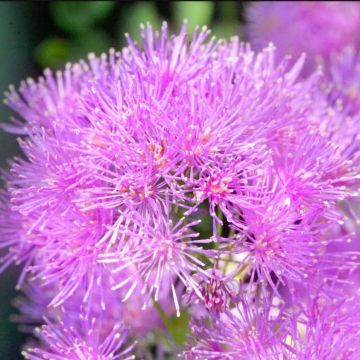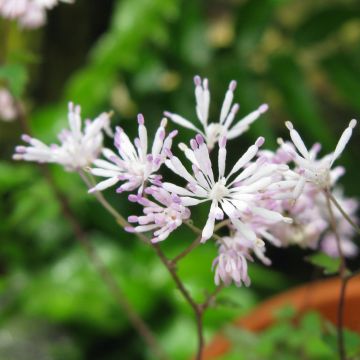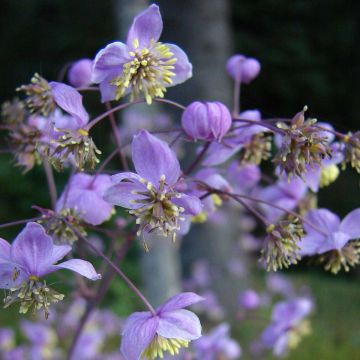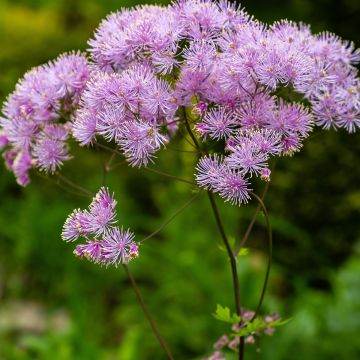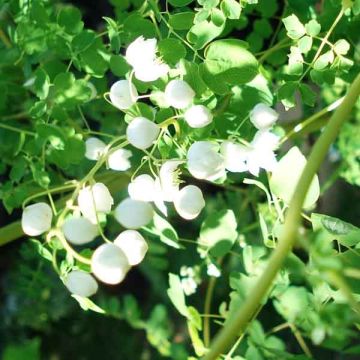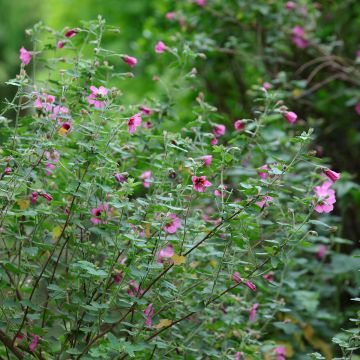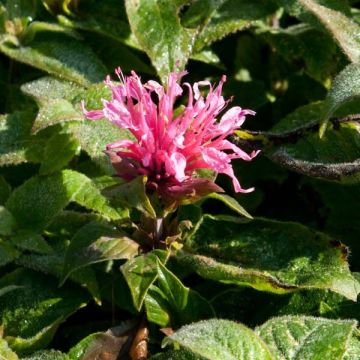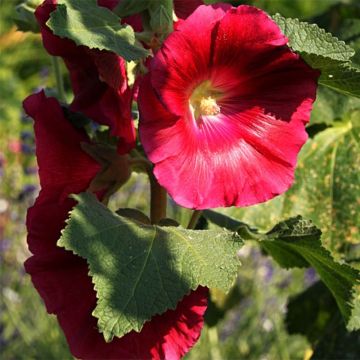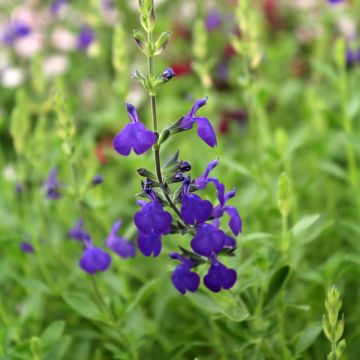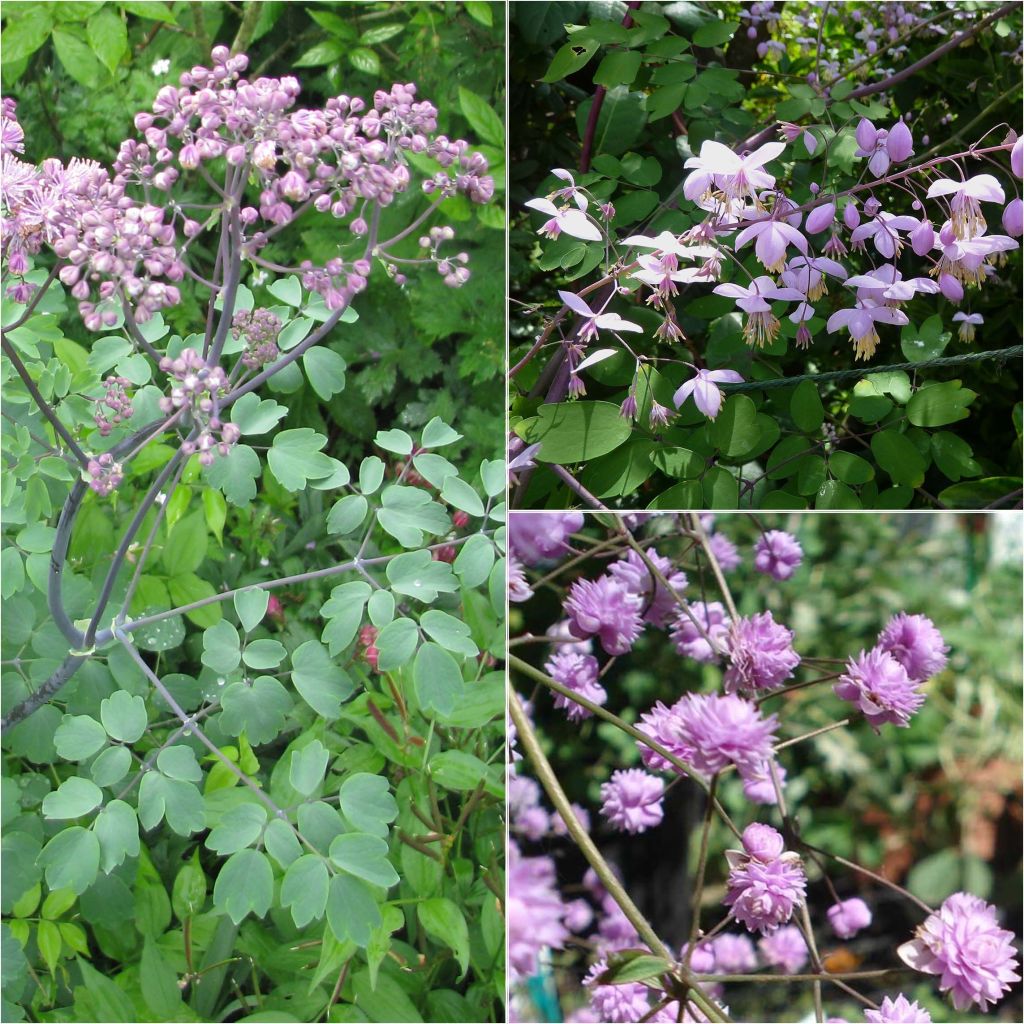

Collection of 3 Thalictrums rose lilac
Collection of 3 Thalictrums rose lilac
Thalictrum Splendide, Hewitt's Double, Black Stockings
This item cannot be shipped to the selected country
Delivery charge from €5.90
More information
Schedule delivery date,
and select date in basket
This plant carries a 12 months recovery warranty
More information
We guarantee the quality of our plants for a full growing cycle, and will replace at our expense any plant that fails to recover under normal climatic and planting conditions.
From €5.90 for pickup delivery and €6.90 for home delivery
Express home delivery from €8.90.

Does this plant fit my garden?
Set up your Plantfit profile →
Collection items (3 plants)
Description
The collection consists of 3 plants:
- x 1 Thalictrum delavayi Splendid: a variety with generous flowering, in large panicles of pink lilac flowers, resembling baby's breath. Height: 1.75m (6ft) in bloom
- x 1 Thalictrum delavayi Hewitt's Double: a very beautiful selection with double pink lilac flowers, from summer to late autumn. Height: 1m (3ft)
- x 1 Thalictrum Black Stockings: this variety carries its graceful deep pink flowers on almost black brown-purple stems. Height: 1m (3ft)
Tagged separately.
The Thalictrum genus is composed of perennial plants, native to the Himalayan region of Asia, from eastern Tibet to western China, belonging to the Ranunculaceae family. It is found in the wild at high altitudes, in forests, scrublands, and grassy slopes. The Meadow-rue is a herbaceous perennial, with an upright and erect habit, forming a bushy clump, from which flexible and slender stems rise. Its deciduous foliage disappears in autumn and regrows in spring. The foliage is glaucous green with a slight bluish tint, finely divided and very light. From July to September, large loose panicles appear, terminal and axillary, well-branched, made up of small flowers without corollas, with multiple stamens. Not liking competition from nearby roots, a planting distance of 25cm (10in) around its base should be respected. Meadow-rues, which are quite slow to establish, will become more and more beautiful over time.
Report an error about the product description
Flowering
Foliage
Plant habit
Botanical data
Thalictrum
Splendide, Hewitt's Double, Black Stockings
Ranunculaceae
Cultivar or hybrid
Other Thalictrum - Meadow Rue
Planting and care
Despite its delicate and fragile appearance, the Thalictrum is very hardy and low-maintenance. It simply needs to be planted in partial shade or even full shade, in a moist to wet soil that is rich in organic matter and well-drained, without too much limestone. It can also be established in full sun, as long as the soil remains moist and the plant is surrounded by ambient humidity.
Planting can be done in spring or autumn. Planting it at the base of a north or east-facing wall is ideal. Don't hesitate to amend the soil with compost every year to improve drainage in winter and facilitate root development. Also, remember to water regularly during dry and hot periods. Regularly deadhead the flowers to prolong flowering. It loses its leaves in autumn and completely disappears in winter, only reappearing quite late in spring. Therefore, it is advisable not to cut the plant to the ground in autumn, so as not to forget its location the following spring. It is a bit slow to establish, but it will delight gardeners over the years! Due to its size, staking may be necessary, especially if this Meadow-rue is used as a standalone plant or in a windy location. To avoid this inconvenience, it is recommended to plant it in the middle of other plants and bushes that it can lean on. Dividing the clumps can be done in March-April by cutting the plant into several pieces with a spade, but the divisions take a long time to establish. While it is highly resistant to diseases, it may be susceptible to powdery mildew during drought and slug attacks at the start of the growing season.
Planting period
Intended location
Care
-
, onOrder confirmed
Reply from on Promesse de fleurs
Summer flowering perennials
Haven't found what you were looking for?
Hardiness is the lowest winter temperature a plant can endure without suffering serious damage or even dying. However, hardiness is affected by location (a sheltered area, such as a patio), protection (winter cover) and soil type (hardiness is improved by well-drained soil).

Photo Sharing Terms & Conditions
In order to encourage gardeners to interact and share their experiences, Promesse de fleurs offers various media enabling content to be uploaded onto its Site - in particular via the ‘Photo sharing’ module.
The User agrees to refrain from:
- Posting any content that is illegal, prejudicial, insulting, racist, inciteful to hatred, revisionist, contrary to public decency, that infringes on privacy or on the privacy rights of third parties, in particular the publicity rights of persons and goods, intellectual property rights, or the right to privacy.
- Submitting content on behalf of a third party;
- Impersonate the identity of a third party and/or publish any personal information about a third party;
In general, the User undertakes to refrain from any unethical behaviour.
All Content (in particular text, comments, files, images, photos, videos, creative works, etc.), which may be subject to property or intellectual property rights, image or other private rights, shall remain the property of the User, subject to the limited rights granted by the terms of the licence granted by Promesse de fleurs as stated below. Users are at liberty to publish or not to publish such Content on the Site, notably via the ‘Photo Sharing’ facility, and accept that this Content shall be made public and freely accessible, notably on the Internet.
Users further acknowledge, undertake to have ,and guarantee that they hold all necessary rights and permissions to publish such material on the Site, in particular with regard to the legislation in force pertaining to any privacy, property, intellectual property, image, or contractual rights, or rights of any other nature. By publishing such Content on the Site, Users acknowledge accepting full liability as publishers of the Content within the meaning of the law, and grant Promesse de fleurs, free of charge, an inclusive, worldwide licence for the said Content for the entire duration of its publication, including all reproduction, representation, up/downloading, displaying, performing, transmission, and storage rights.
Users also grant permission for their name to be linked to the Content and accept that this link may not always be made available.
By engaging in posting material, Users consent to their Content becoming automatically accessible on the Internet, in particular on other sites and/or blogs and/or web pages of the Promesse de fleurs site, including in particular social pages and the Promesse de fleurs catalogue.
Users may secure the removal of entrusted content free of charge by issuing a simple request via our contact form.
The flowering period indicated on our website applies to countries and regions located in USDA zone 8 (France, the United Kingdom, Ireland, the Netherlands, etc.)
It will vary according to where you live:
- In zones 9 to 10 (Italy, Spain, Greece, etc.), flowering will occur about 2 to 4 weeks earlier.
- In zones 6 to 7 (Germany, Poland, Slovenia, and lower mountainous regions), flowering will be delayed by 2 to 3 weeks.
- In zone 5 (Central Europe, Scandinavia), blooming will be delayed by 3 to 5 weeks.
In temperate climates, pruning of spring-flowering shrubs (forsythia, spireas, etc.) should be done just after flowering.
Pruning of summer-flowering shrubs (Indian Lilac, Perovskia, etc.) can be done in winter or spring.
In cold regions as well as with frost-sensitive plants, avoid pruning too early when severe frosts may still occur.
The planting period indicated on our website applies to countries and regions located in USDA zone 8 (France, United Kingdom, Ireland, Netherlands).
It will vary according to where you live:
- In Mediterranean zones (Marseille, Madrid, Milan, etc.), autumn and winter are the best planting periods.
- In continental zones (Strasbourg, Munich, Vienna, etc.), delay planting by 2 to 3 weeks in spring and bring it forward by 2 to 4 weeks in autumn.
- In mountainous regions (the Alps, Pyrenees, Carpathians, etc.), it is best to plant in late spring (May-June) or late summer (August-September).
The harvesting period indicated on our website applies to countries and regions in USDA zone 8 (France, England, Ireland, the Netherlands).
In colder areas (Scandinavia, Poland, Austria...) fruit and vegetable harvests are likely to be delayed by 3-4 weeks.
In warmer areas (Italy, Spain, Greece, etc.), harvesting will probably take place earlier, depending on weather conditions.
The sowing periods indicated on our website apply to countries and regions within USDA Zone 8 (France, UK, Ireland, Netherlands).
In colder areas (Scandinavia, Poland, Austria...), delay any outdoor sowing by 3-4 weeks, or sow under glass.
In warmer climes (Italy, Spain, Greece, etc.), bring outdoor sowing forward by a few weeks.




































